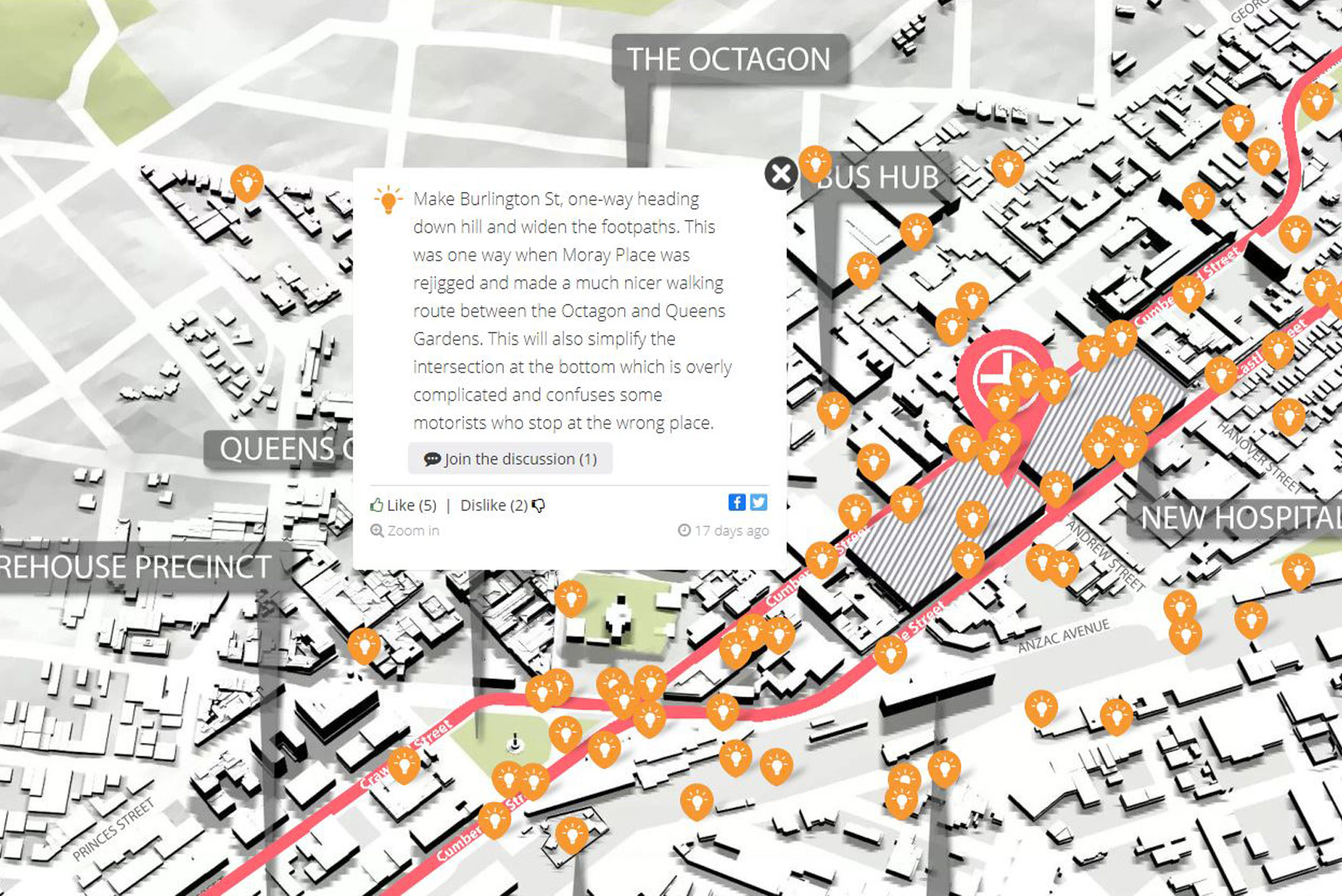The engagement plan originally intended to use a range of methods including print media, online digital engagement, stakeholder workshops, a project specific email contact and phone number for people to call in with their feedback. The global health pandemic of COVID-19 caused significant reactive changes to made to the engagement methods. Public engagement was adapted to online, all-digital media as the primary method of engagement, hosted on a web-based platform called Social Pinpoint. This enabled the project to continue as planned.
To achieve this, Boffa Miskell developed a bespoke website to present a range of transport and urban design ideas in an engaging and informing way. The team customised the Social Pinpoint platform (usually a 2D tool) to provide an easy and accessible way for the public to get involved in the project in real time.
A series of bespoke 3D interactive maps and visuals were created using a variety of graphic software, including Infraworks, ArcGIS and Sketch-up. It included buildings and features of central Dunedin drawn to scale, which made the city’s streetscape ‘come alive’ and offer viewers a more accurate perspective that makes information easier to understand.
All comments and feedback made on the website were made in real time and remained visible to other visitors to the site. This made it easy for people to read other people’s comments and opinions and engage in a ‘live’ discussion. This transparency also enabled the Connecting Dunedin partners and client team to review comments and ideas as they were made.
Over the period of engagement in June and July 2020, there were over 22,000 total visits to the website, with over 5,000 unique visitors and over 1500 individual comments and responses, meaning many people repeatedly engaging with the information.
Services provided: Urban design, landscape architecture and digital.
